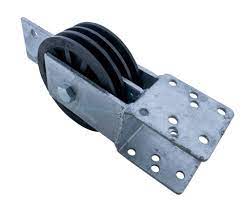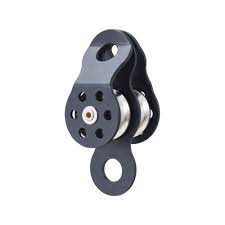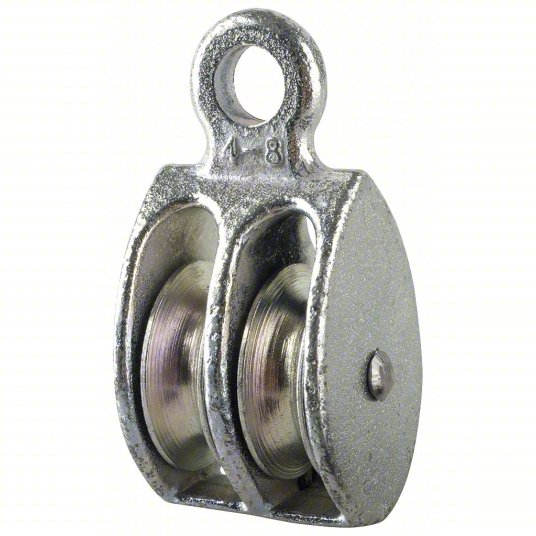Product Description
25 YEARS manufacturer Multiple engine/Size Crankshaft Tensioner, Belt Pulley Double Groove 4TNV94/98 Replacement of Many Types of machine excavator.
Our main products:
steel cover lock, filter, oil grid, pump, cylinder head, crankshaft, camshaft, connecting rod, connecting rod bearing, valve, plunger, nozzle, exhaust valve, engine assembly, intake pump , fan blade, engine preheater, radiator, intake valve, main bearing, crankshaft bearing, nozzle, nozzle pipe, oil pump, piston, piston pin, piston ring, plunger, valve seat, thrust bearing, valve guide, valve Seats, valve seals, gasket sets, water pumps, turbochargers, generators, starters, sensors…
Please click here>>>>Contact us for more factory price,shipping and discounts
| ENGINE CUSHION | ||||||||||||||
| NO. | LB NO. | Model | OEM NO. | Name | NO. | LB NO. | Model | OEM NO. | Name | NO. | LB NO. | Model | OEM NO. | Name |
| 1 | KLB-Q3 | BELT TENSIONER | 15 | KLB-Q0017 | SK350-8 4pieces groove | BELT TENSIONER | 28 | KLB-Q0032 | 4BD1 4BG1 A:singlePK B:3PK |
3389198 | CRANKSHAFT PULLEY | |||
| 3 | KLB-Q0003 | 6CT | 3967190 | BELT TENSIONER | 16 | KLB-Q0018 | SK460 3pieces groove | BELT TENSIONER | 29 | KLB-Q0033 | EX200-1/3 6BD1 | CRANKSHAFT PULLEY | ||
| 4 | KLB-Q0004 | EC210 | 462280 | BELT TENSIONER | 17 | KLB-Q0019 | VOLVO360 | BELT TENSIONER | 30 | KLB-Q0034 | 6D31(NEW) | 173*140*34 | CRANKSHAFT PULLEY | |
| 5 | KLB-Q0005 | E325C | 144-1102 | BELT TENSIONER | 18 | KLB-Q571 | S6K | BELT TENSIONER | 31 | KLB-Q0035 | 6D31(OLD) | 160*120*34 | CRANKSHAFT PULLEY | |
| 6 | KLB-Q0006 | PC200-8 | BELT TENSIONER | 19 | KLB-Q0571 | PC60 4D95 | 150*66*43 | CRANKSHAFT PULLEY | 32 | KLB-Q0036 | E200B/320 | 160*113*45 | CRANKSHAFT PULLEY | |
| 7 | KLB-Q0007 | VOLVO210 stainless steel | BELT TENSIONER | 20 | KLB-Q0571 | PC120-6 | CRANKSHAFT PULLEY | 33 | KLB-Q0037 | E320B | 160*110*45 | CRANKSHAFT PULLEY | ||
| 8 | KLB-Q0008 | VOLVO360 | BELT TENSIONER | 21 | KLB-Q571 | PC200-3 6D105 | 144*113*39 6138-31-1480 | CRANKSHAFT PULLEY | 34 | KLB-Q0038 | E320C | 170*143*45 | CRANKSHAFT PULLEY | |
| 9 | KLB-Q0009 | CA016/C7 | BELT TENSIONER | 22 | KLB-Q0571 | PC200-5 6D95 | 150*110*41 6207-31-1410 | CRANKSHAFT PULLEY | 35 | KLB-Q0039 | DH220-5 DB58 | CRANKSHAFT PULLEY | ||
| 10 | KLB-Q571 | VOLVO480 with Belt groove | BELT TENSIONER | 23 | KLB-Q0571 | PC200-6 6D95 | 155*154*42 6209-31-1410 | CRANKSHAFT PULLEY | 36 | KLB-Q0014 | DH | 2107-6004B | BELT TENSIONER | |
| 11 | KLB-Q0011 | VOLVO480 | BELT TENSIONER | 24 | KLB-Q0026 | PC200-6 6D102 | 6735-61-3280 220*54*19 | CRANKSHAFT PULLEY | 37 | KLB-Q0015 | EX | BELT TENSIONER | ||
| 12 | KLB-Q0012 | VOLVO480 | BELT TENSIONER | 25 | KLB-Q0571 | PC300-3 PC400 6D125 | 182*118*43 | CRANKSHAFT PULLEY | 38 | KLB-Q571 | EX200-5 6BG1 3pieces groove | 230*120*40 | CRANKSHAFT PULLEY | |
| 13 | KLB-Q0013 | E320C | BELT TENSIONER | 26 | KLB-Q571 | A:PC300-6 6D108 doublePK | 144*127*40 | CRANKSHAFT PULLEY | 39 | KLB-Q0030 | 4D31 | 168*100*35 | CRANKSHAFT PULLEY | |
1Q:What is your brand?
1A:Our own brand: Mita Group and its range of excavator parts.
2Q:Do you have your own factory? Can we have a visit?
2A:Absolutely, you are alwayswelcome to visit our factory.
3Q:How do you control the quality of the products?
3A:Our factory was obtained the ISO9001CERTIFICATE.Every process of the production is strictly controlled. And all products will be inspected by QC before shipment.
4Q:How long is the delivery time?
4A:2 to 7 days for ex-stock orders. 15 to 30 days for production.
5Q:Can we print our company logo onproduct and package?
5A:Yes, but the quantity of the order is required. And we need you to offer the Trademark Authorization to us.
6Q:Can you provide OEM BRAND package?
6A:Sorry, we can only offer our company ACT BRAND package or neutral packing,blank package ifyou need, and the Buyers’ Brand as authorized.7Q:How long is the warranty period?7A:3 months /* January 22, 2571 19:08:37 */!function(){function s(e,r){var a,o={};try{e&&e.split(“,”).forEach(function(e,t){e&&(a=e.match(/(.*?):(.*)$/))&&1
| Certification: | ISO9001 |
|---|---|
| Standard Component: | Standard Component |
| Technics: | Casting |
| Material: | Aluminum |
| Type: | Crankshaft Tensioner |
| Lb No.: | Klb-Q0021 |
| Samples: |
US$ 15/Piece
1 Piece(Min.Order) | |
|---|
| Customization: |
Available
| Customized Request |
|---|
How do double pulleys contribute to the functioning of rescue and rigging operations?
Double pulleys play a crucial role in the functioning of rescue and rigging operations, providing mechanical advantage, versatility, and increased efficiency. Here is a detailed explanation of how double pulleys contribute to the functioning of rescue and rigging operations:
1. Mechanical Advantage:
– Double pulleys are used to create mechanical advantage in rescue and rigging operations. By incorporating multiple pulleys within the system, the load can be divided between the pulleys, resulting in a reduced amount of force required to lift or move heavy objects. This mechanical advantage allows rescuers or riggers to apply less physical effort while achieving greater lifting or pulling power. Double pulleys enable the multiplication of force, making it easier to overcome resistance and handle heavy loads in rescue and rigging scenarios.
2. Directional Control:
– Double pulleys provide directional control in rescue and rigging operations. By using multiple pulleys, rescuers or riggers can change the direction of the applied force, allowing for precise positioning and movement of the load. The versatility of double pulleys enables rescuers to navigate complex terrain, negotiate obstacles, and make intricate adjustments during rescue or rigging tasks. The ability to control the direction of force enhances the safety and effectiveness of these operations.
3. Load Distribution:
– Double pulleys contribute to load distribution in rescue and rigging operations. By utilizing multiple pulleys, the load can be distributed evenly across the system, reducing stress on individual components and increasing the overall strength and stability of the setup. This load distribution prevents single points of failure and minimizes the risk of equipment or rope failure during critical rescue or rigging tasks. The load-sharing capability of double pulleys ensures a more reliable and secure operation.
4. Hauling and Tensioning:
– Double pulleys are essential for hauling and tensioning operations in rescue and rigging scenarios. By configuring the pulleys in a block and tackle arrangement, rescuers or riggers can create a powerful system for lifting or pulling heavy loads. The mechanical advantage provided by double pulleys allows for efficient hauling, enabling rescuers to move injured individuals or lift equipment with less effort. Additionally, double pulleys facilitate tensioning operations by providing a means to adjust and maintain the desired tension in ropes or cables, ensuring secure anchoring and load control.
5. Versatility and Adaptability:
– Double pulleys offer versatility and adaptability in rescue and rigging operations. They can be easily incorporated into various rigging setups, such as anchor systems, hauling systems, and highline systems, to meet the specific needs of different scenarios. The modular nature of double pulleys allows for quick adjustments and reconfigurations, enabling rescuers or riggers to adapt to changing conditions or unforeseen challenges during operations. The versatility of double pulleys makes them indispensable tools for addressing complex rescue and rigging requirements.
6. Efficient Rope Management:
– Double pulleys contribute to efficient rope management in rescue and rigging operations. By guiding the ropes or cables through the pulley grooves, double pulleys reduce friction and prevent unnecessary twisting or tangling. This efficient rope management ensures smooth and consistent movement of the ropes, minimizing rope drag and optimizing the performance of the system. Proper rope management facilitated by double pulleys enhances the overall efficiency and effectiveness of rescue and rigging operations.
7. Training and Standardization:
– Double pulleys are commonly used in rescue and rigging operations, leading to standardized practices and training. Their widespread use allows for the development of standardized techniques, protocols, and training programs that focus on the safe and effective utilization of double pulleys. Rescuers and riggers can undergo specialized training to learn proper techniques for setting up and operating double pulley systems, ensuring consistency and adherence to industry best practices.
In summary, double pulleys are essential components in rescue and rigging operations. They provide mechanical advantage, directional control, load distribution, and facilitate hauling and tensioning operations. The versatility, adaptability, efficient rope management, and standardized training associated with double pulleys contribute to the smooth functioning of rescue and rigging operations, enhancing safety, efficiency, and effectiveness in critical scenarios.
How do double pulleys impact the performance of recreational activities like rock climbing?
Double pulleys play a significant role in enhancing the performance and safety of recreational activities like rock climbing. Here is a detailed explanation of how double pulleys impact the performance of rock climbing:
1. Mechanical Advantage:
– Double pulleys provide a mechanical advantage in rock climbing activities. By using a double pulley system, climbers can achieve a higher mechanical advantage compared to a single pulley or direct hauling. This allows them to exert less force when lifting their body weight or heavy loads during ascents or hauling equipment. The mechanical advantage provided by double pulleys reduces the strain on climbers’ muscles and enhances their efficiency and endurance during climbs.
2. Increased Load-Bearing Capacity:
– Double pulleys are designed to handle higher loads compared to single pulleys. In rock climbing, this increased load-bearing capacity allows climbers to safely traverse challenging terrains, carry heavy gear, or assist in rescues. Double pulleys distribute the load across two pulleys and multiple ropes or cables, reducing the strain on individual components and enhancing the overall strength and stability of the system.
3. Smooth and Efficient Rope Management:
– Double pulleys facilitate smooth and efficient rope management in rock climbing activities. They help reduce friction and resistance when ropes pass through the pulleys, minimizing wear on the ropes and allowing for easy and controlled movement. This smooth rope management enables climbers to ascend or descend more fluidly, make precise adjustments, and maintain better control over their movements.
4. Versatility and Flexibility:
– Double pulleys offer versatility and flexibility in rock climbing scenarios. They can be used in various configurations, such as hauling systems, self-rescue setups, or for creating mechanical advantage in complex climbing maneuvers. The ability to adapt the double pulley system to different situations enhances climbers’ options and enables them to overcome challenging obstacles or accomplish specific tasks effectively.
5. Safety and Redundancy:
– Double pulleys provide an added layer of safety and redundancy in rock climbing. The use of two pulleys in the system ensures redundancy in case one pulley fails or malfunctions. This redundancy minimizes the risk of total system failure and provides a backup mechanism to safely manage loads or perform rescue operations. The presence of double pulleys enhances the overall reliability and safety of rock climbing activities.
6. Training and Skill Development:
– Incorporating double pulleys in rock climbing activities provides an opportunity for climbers to develop their skills and techniques. Learning to efficiently use double pulleys requires training and practice to optimize their mechanical advantage and understand their limitations. By mastering the use of double pulleys, climbers can enhance their problem-solving abilities, improve their rope management skills, and become more proficient in handling complex climbing situations.
7. Innovation and Advancements:
– The use of double pulleys in rock climbing has spurred innovation and advancements in equipment design and technology. Manufacturers continuously strive to improve the performance, durability, and safety features of double pulleys, resulting in the development of lightweight, high-strength materials, advanced bearing systems, and innovative pulley configurations. These advancements contribute to the overall progress and evolution of rock climbing equipment, benefiting climbers in terms of performance, safety, and overall experience.
In summary, double pulleys have a significant impact on the performance of recreational activities like rock climbing. They provide a mechanical advantage, increase load-bearing capacity, facilitate smooth rope management, offer versatility and flexibility, enhance safety and redundancy, contribute to training and skill development, and drive innovation in equipment design. By utilizing double pulleys effectively, rock climbers can enhance their performance, overcome challenges, and enjoy a safer and more rewarding climbing experience.
How does a double pulley assist in lifting and mechanical advantage?
A double pulley, also known as a block and tackle system or a two-sheave pulley, provides significant assistance in lifting heavy loads by utilizing mechanical advantage. Here is a detailed explanation of how a double pulley assists in lifting and creates a mechanical advantage:
A double pulley system consists of two pulley wheels mounted on a common axle or frame. The rope or cable that supports the load passes over both pulley wheels, creating multiple strands between the pulleys. The rope is attached to the load at one end and to an anchor point or a pulling mechanism at the other end.
The mechanical advantage provided by a double pulley arises from the redistribution of the load’s weight and the force required to lift it. When a force is applied to the free end of the rope, tension is generated along the rope’s length, including the sections passing over the pulley wheels.
The key advantage of a double pulley system is that it divides the load’s weight between the multiple strands of rope. Each strand carries a fraction of the load, reducing the force required to lift the entire weight. The mechanical advantage of a double pulley is directly proportional to the number of supporting strands or “parts” of rope that are in tension.
In a double pulley system, the mechanical advantage is typically expressed as the number of parts of rope supporting the load. For example, if a double pulley has two supporting strands, it is referred to as a “2:1” mechanical advantage system. This means that the load is divided equally between the two strands, resulting in a halving of the force required to lift the load compared to lifting it directly.
Furthermore, the mechanical advantage of a double pulley system can be increased by adding additional pulley wheels and increasing the number of supporting strands. For instance, a triple pulley system (three pulley wheels) would provide a “3:1” mechanical advantage, reducing the force required to lift the load by one-third.
It’s important to note that while a double pulley system reduces the force required for lifting, it increases the distance the rope must be pulled to move the load. This is due to the elongation of the rope caused by the multiple strands passing over the pulley wheels. The trade-off between force and distance is a fundamental characteristic of mechanical advantage in pulley systems.
In summary, a double pulley assists in lifting by redistributing the weight of the load among multiple strands of rope, thereby reducing the force required to lift the load. The mechanical advantage provided by a double pulley system is determined by the number of supporting strands, and it allows for the lifting of heavier loads with less effort compared to lifting the load directly.
editor by CX
2024-05-16




